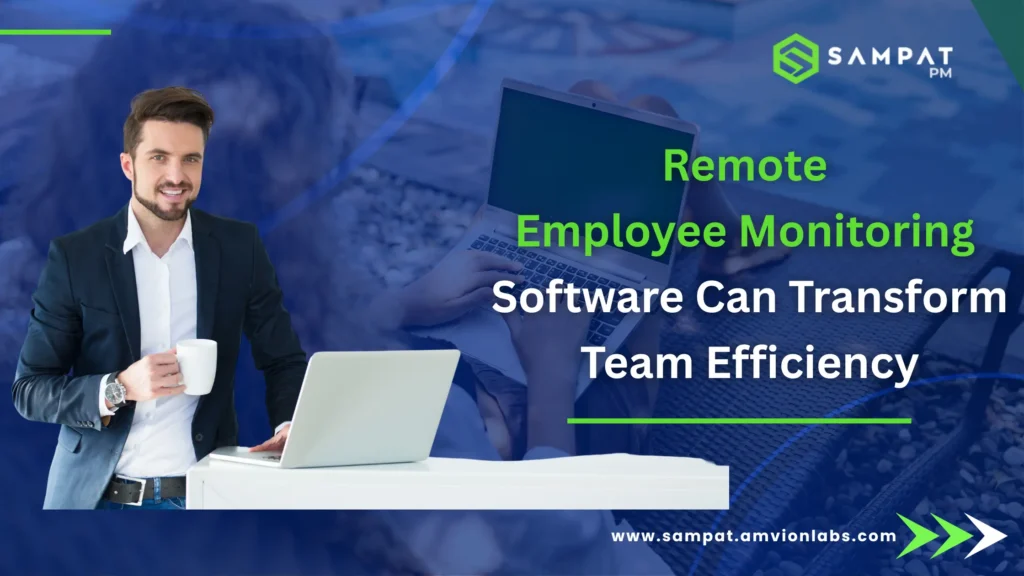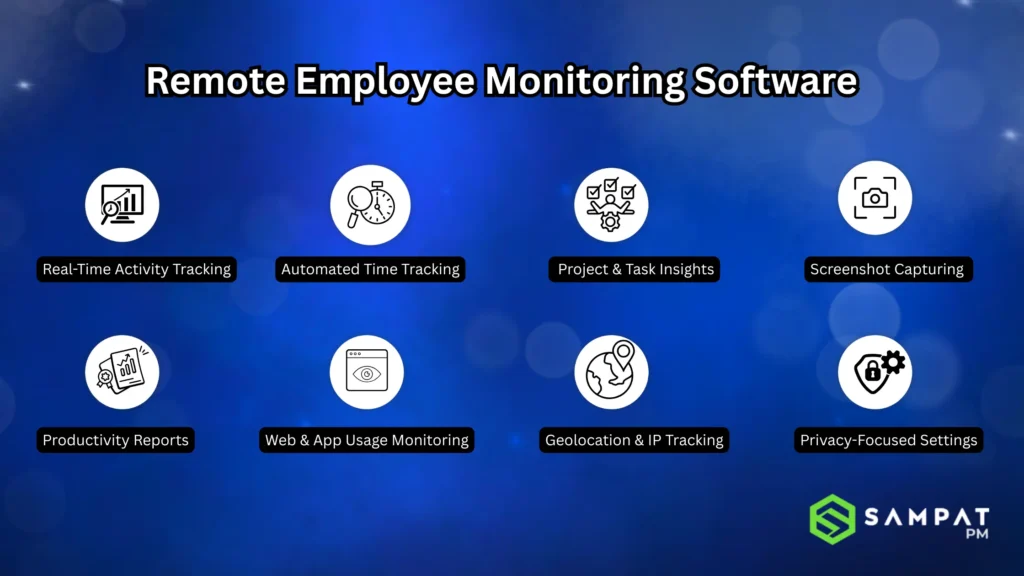
Remote Employee Monitoring Software Can Transform Team Efficiency
The way we work has changed—permanently. With hybrid and remote work becoming the norm, companies around the world are learning how to adapt. One key player in this shift is employee tracking software, a tool that’s helping organizations stay connected, accountable, and productive, no matter where their team members are located.
Let’s explore how this technology is reshaping team efficiency and why it may be the missing piece in your remote work strategy.
Is Employee Tracking Software a Must-Have for Business?
If your team is working remotely, partially or fully, you’ve probably faced some of these questions: Are my employees staying productive? How do I know work is getting done on time? Is anyone feeling burned out or overloaded?
These are valid concerns. Without the natural visibility of an office space—seeing people at their desks, overhearing team updates, or casually checking on progress—it becomes much harder to manage performance and ensure productivity. This is exactly where employee tracking tools become essential for maintaining visibility and accountability.
Rather than micromanaging, these tools offer structured insights into how work is being done. They remove guesswork, enabling managers to make informed decisions about support, delegation, and recognition. If you’re serious about scaling a remote or hybrid team without losing visibility or accountability, SAMPAT employee monitoring software is more of a necessity than a luxury.
What is Employee Monitoring Software?
At its core, employee monitoring software is a digital platform that helps organizations track employee activity during work hours. But modern platforms do far more than just logging in and out times.
They can show which apps and websites are being used, how much time is spent on different tasks, whether employees are idle or active, and even generate productivity reports over days, weeks, or months. Certain platforms, like SAMPAT, also offer advanced features like task management, timeline tracking, and built-in team communication options.
Importantly, these systems are customizable. You can choose what to track and how to use that data in a respectful, privacy-conscious manner. In other words, it’s not about watching—it’s about understanding and supporting your team’s workflow.
How Employee Monitoring Software Boosts Team Efficiency
The goal of using such tools isn’t control—it’s clarity. Here’s how employee tracking software contributes to higher efficiency:
1. Improved Productivity:
Employees often become more focused when they know their work habits are visible—not out of fear, but out of accountability. Tools that visualize daily or weekly performance help individuals reflect on their time usage and eliminate distractions.
2. Better Resource Allocation:
By analyzing time spent on tasks, managers can identify who’s overloaded and who may be underutilized. This allows for balanced workloads and smarter project distribution.

3. Data-Driven Decision Making:
Instead of relying on vague impressions, managers can make decisions based on actual data. Whether it’s identifying skill gaps, rescheduling timelines, or offering support, facts replace assumptions.
4. Enhanced Transparency and Fairness:
In remote work setups, visibility can be uneven. Some employees over-communicate, while others go unnoticed. This brings balance by offering a neutral view of everyone’s contribution.
5. Reduced Burnout:
Metrics can help detect when an employee is consistently overworking or not taking breaks. Early intervention can prevent burnout and promote healthier work habits.
6. Streamlined Remote Collaboration:
Especially for distributed teams in different time zones, these tools make asynchronous collaboration smoother. Managers can check progress without constant check-ins, allowing employees to work in focused blocks.
How to Monitor Employees Working from Home — The Right Way
The biggest concern around employee monitoring software is often privacy. No employee appreciates the feeling of constant surveillance during their workday. The good news? When done with transparency and respect, monitoring becomes a support tool, not a threat.
Start by clearly communicating what will be monitored and why. Share how the data will be used—whether it’s for tracking project status, improving individual productivity, or supporting employee well-being. Being transparent and obtaining agreement from your team is key to establishing trust.
Next, choose software that allows flexible settings. For instance, it’s important to steer clear of monitoring private emails or anything outside of designated work hours. Instead, focus on work-related apps and time spent on tasks during the official schedule.
Encourage employees to use the data themselves. SAMPAT employee tracking software offers dashboards that help individuals analyze their own habits and make improvements. It’s empowering when employees feel they have ownership over their performance data.
Read More: Our latest blog Employee Monitoring: Ethical Practices to Balance Trust and Productivity
Finally, don’t rely on software alone. Use the insights as a starting point for conversations—not a replacement. If someone’s numbers dip, check in with empathy. If someone’s excelling, recognize it. Technology is only powerful when paired with thoughtful leadership.
Conclusion: A Smarter Way Can Transform Team Efficiency
The workplace has evolved, and with it, the tools we need to lead effectively. Employee monitoring software isn’t just about keeping tabs on your team—it’s about building a culture of trust, accountability, and data-driven growth.
Whether you’re running a 10-person startup or managing hundreds of remote employees across regions, the right platform can help you streamline operations, reduce burnout, and drive consistent results.
Think of employee tracking software not as a watchdog, but as a guide. It offers clarity in the chaos of remote work, giving both managers and employees the visibility and insights needed to work smarter—not harder.



